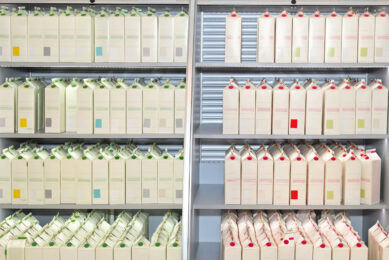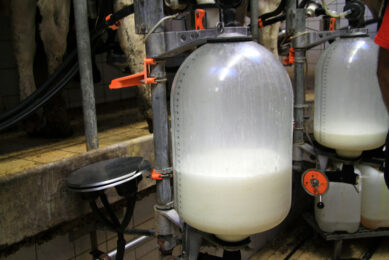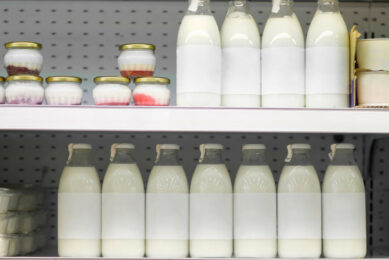China’s dairy demand has global consequences

China will consume more milk in the future, and this will have an effect on the greenhouse gas emissions and land use.
This is stated in a new study, published in the Journal Global Change Biology. A team of researchers from China, Wageningen, New Zealand, the UK and Austria looked at different scenarios of domestic milk production and importation, and hence the effect on the environment.
China has an ever-increasing thirst for milk, with a predicted 3.2-fold increase in demand by 2050 compared to the production level in 2010. Increased milk production means that more animal feed (particularly soy and maize) needs to be produced and traded. For example, if China decides to produce all the extra milk they need themselves, their imports of animal fodder will more or less quadruple, while their greenhouse gas emissions will double.
One of the scenarios that the researchers calculated was the business as usual method; meaning that current production methods would be used for the 75% of the additionally required milk (produced in China) and 25% was imported from Europe, New Zealand and the US. By 2050, the amount of land around the world needed for fodder crops for the dairy industry would have increased by 30%, resulting in an increase in global greenhouse gas emissions of about 35% and increased nitrogen emissions of nearly 50%. If all the additional required milk was produced outside China, then Europe, New Zealand and the US would need to drastically increase the amount of land under fodder, as stated on the website of Wageningen UR.

Importing the extra milk will transfer the environmental burden from China to milk exporting countries; current dairy exporting countries may be unable to produce all additional milk due to physical limitations or environmental preferences/legislation. For example, the farmland area for cattle-feed production in New Zealand would have to increase by more than 57% (1.3 million ha) and that in Europe by more than 39% (15 million ha), while GHG emissions and nitrogen losses would increase roughly proportionally with the increase of farmland in both regions.
The researchers of the study propose that a more sustainable dairy future will rely on high milk demanding regions (such as China) improving their domestic milk and feed production efficiencies up to the level of leading milk producing countries. This will decrease the global dairy related GHG emissions and land use by 12% and 30% (34 million ha land reduction) compared to the business as usual scenario, respectively. However, this still represents an increase in total GHG emissions of 19% whereas land use will decrease by 8% when compared with 2010 levels, respectively.
Source: WUR and Global Change Biology
Join 13,000+ subscribers
Subscribe to our newsletter to stay updated about all the need-to-know content in the dairy sector, two times a week.










